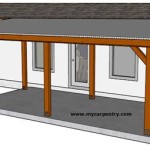How to Repair Loose Patio Pavers
Patio pavers offer an attractive and durable surface for outdoor living spaces. However, over time, these pavers can become loose, creating an uneven surface that presents both aesthetic and safety concerns. Understanding the causes of loose pavers and the proper repair techniques is essential for maintaining the integrity and longevity of a patio. This article provides a comprehensive guide to repairing loose patio pavers, covering preparation, removal, leveling, and reinstallation.
The primary reasons for patio pavers becoming loose are varied. Erosion of the underlying sand base is a common culprit. Rainwater, especially if drainage is inadequate, can wash away the sand, leading to voids beneath the pavers. Improper installation techniques, such as insufficient compaction of the base material or inadequate edge restraints, can also contribute to instability. Furthermore, heavy foot traffic and extreme weather conditions can accelerate the loosening process. Identifying the root cause is important to prevent recurrence after the repair process.
Assessing the Damage and Gathering Materials
Before embarking on the repair, a thorough assessment of the affected area is crucial. This involves identifying all loose pavers and noting the extent of the settling. Look for areas where the sand base has eroded or where the pavers have shifted significantly. Take note of any damaged pavers that may require replacement. Once the assessment is complete, gather the necessary materials and tools. This will streamline the repair process and ensure that everything is readily available.
The essential materials include: paver sand (also known as polymeric sand or jointing sand), a rubber mallet, a level (at least 4 feet long), a trowel, a hand tamper or plate compactor (for larger areas), a screwdriver or paver removal tool, a broom or stiff brush, and a wheelbarrow or bucket for mixing and transporting materials. If any pavers are cracked or broken, replacement pavers matching the existing style and color should also be acquired. Eye protection and work gloves are also highly recommended for safety.
The type of paver sand chosen can impact the longevity of the repair. Polymeric sand is a popular choice because it contains additives that bind the sand particles together, creating a more stable and erosion-resistant joint. This type of sand requires activating with water after installation. Regular paver sand, while less expensive, may require more frequent reapplication. The choice depends on the specific site conditions and the desired level of maintenance.
Removing and Preparing the Loose Pavers
The next step involves carefully removing the loose pavers. Use a flathead screwdriver or a specialized paver removal tool to pry up the pavers. Inserting the tool into the joints between the pavers can help loosen them. Work gently to avoid damaging the pavers or surrounding ones. Numbering the pavers with chalk or masking tape on their underside as they are removed is helpful to simplify the reinstallation process, particularly if the pattern is complex. This is also helpful in remembering which edge was facing what direction.
After removing the pavers, thoroughly clean the exposed area. Scrape away any loose sand, debris, and weeds from the base. Inspect the underlying base material for any signs of damage or erosion. If the base is severely compromised, it may need to be rebuilt. This involves excavating the existing base and replacing it with a properly compacted layer of gravel and sand. The depth of the base layer depends on the soil conditions and the expected load on the patio.
A stable and well-compacted base is crucial for preventing future settling and loosening of the pavers. If the existing base is intact but uneven, add a fresh layer of paver sand to level the surface. Use a trowel to spread the sand evenly and a level to ensure that the surface is flat and consistent. Compact the sand with a hand tamper or plate compactor to create a solid foundation for the pavers. This compaction step is critical to prevent future settling.
When adding new sand, ensure it is the same type as the original sand. Mixing different types of sand can lead to inconsistencies in compaction and drainage. Use a stiff brush to sweep away any excess sand from the surrounding area. A clean and properly leveled base is essential for a successful paver repair.
Reinstalling and Leveling the Pavers
With the base prepared, the pavers can be reinstalled. Refer to any numbering or markings that were made during removal to ensure that the pavers are placed in their original positions. Gently lower each paver onto the prepared base. Avoid dropping the pavers, as this can damage them or disturb the sand base.
Once the pavers are in place, use a rubber mallet to gently tap them into the sand base. This will help to level the pavers and ensure that they are firmly seated. Check the level of each paver with a long level. If a paver is too high, remove it and remove some sand from underneath. If a paver is too low, add more sand and recompact it before replacing the paver. This process may require some adjustments to achieve a perfectly level surface.
Pay close attention to the alignment of the pavers. They should be evenly spaced and aligned with the surrounding pavers. Use a straight edge to check the alignment and make any necessary adjustments. Consistent spacing and alignment are essential for both aesthetic appeal and structural integrity. If using polymeric sand, ensure the joints are completely filled up to the bottom edge of the paver to ensure a good water seal. Gapping can cause future issues.
After all the pavers have been reinstalled and leveled, sweep the entire patio surface with a broom or stiff brush to remove any excess sand. This will also help settle the sand into the joints between the pavers. If using polymeric sand, follow the manufacturer's instructions for watering and activating the sand. This typically involves lightly misting the surface with water to allow the binding agents in the sand to activate and create a solid joint.
Edge restraints are crucial for maintaining the stability of the patio. These restraints prevent the pavers from shifting and settling over time. If the existing edge restraints are damaged or inadequate, replace them with new restraints. Install the restraints flush with the surface of the pavers and secure them in place with stakes or concrete. Proper edge restraints will significantly extend the lifespan of the patio.
After the polymeric sand has cured, inspect the patio for any remaining unevenness or loose pavers. If any adjustments are needed, repeat the leveling process as described above. With proper care and maintenance, the repaired patio pavers should provide a durable and attractive surface for many years to come. Regular sweeping and occasional cleaning will help prevent the buildup of debris and weeds in the joints, further extending the life of the patio.
In situations where a large area of the patio needs repair, or where the underlying base is severely damaged, it may be more cost-effective to consider a complete patio renovation. This involves removing all the existing pavers and rebuilding the base from scratch. While this is a more extensive project, it can provide a longer-lasting and more aesthetically appealing result. Consult with a qualified landscaping contractor to assess the condition of the patio and determine the best course of action.
Repairing loose patio pavers is a manageable task for most homeowners. By following these steps and taking the time to do the job properly, it is possible to restore the patio to its original beauty and functionality. Remember, a stable base is essential for a durable patio, so take extra care to ensure that the base is properly compacted and leveled. Regular inspection and maintenance will help prevent future problems and keep the patio looking its best for years to come.

Fix Your Rocking Patio Slabs With This Easy Solution

How To Repair Sinking Patio Pavers Splendour In Stone

How To Repair Sinking Patio Pavers Diy

Why Are Your Paver Steps Loose

How To Fix Uneven Patio Pavers

How To Repair Loose Rocking Paving Slabs Step By Buckinghamshire Landscape Gardeners

How To Fix Loose Pavers Install It Direct

Repairing Paver Joints

How To Repair A Patio S Grouting Sinking Checkatrade

Fixing Loose Flagstones Pavingexpert
Related Posts








